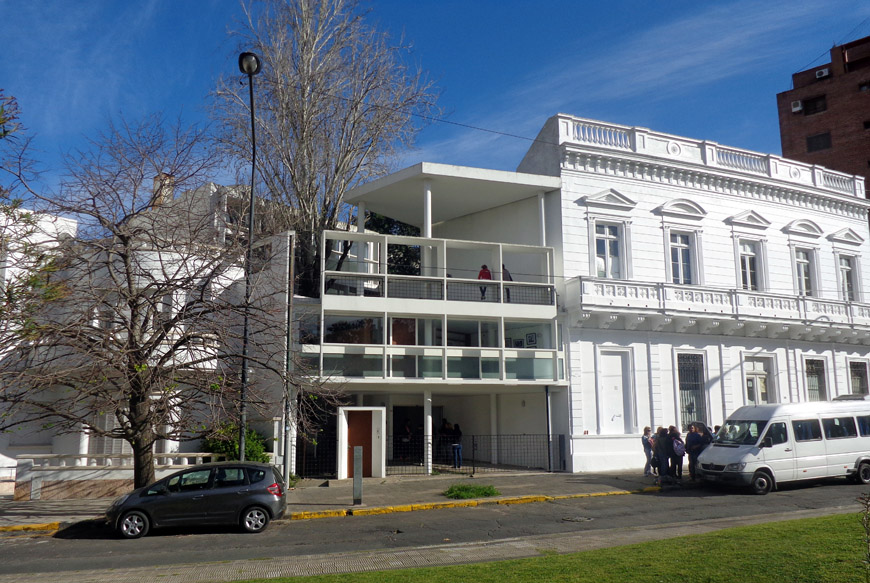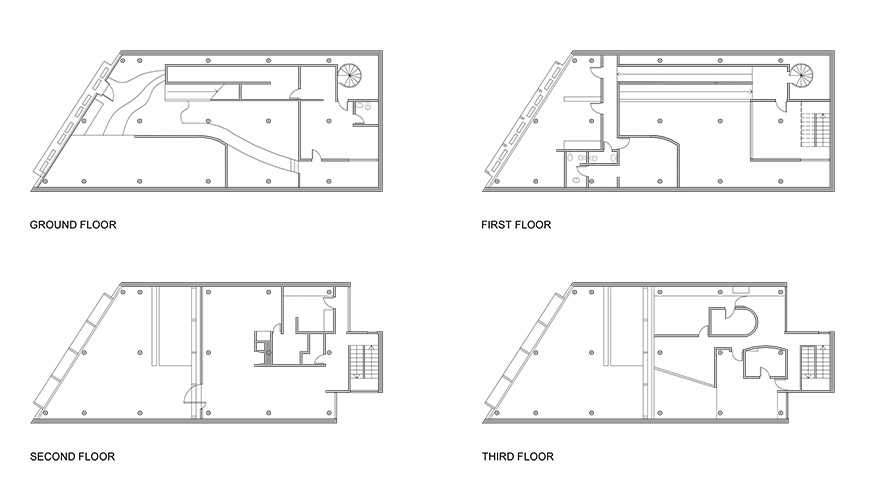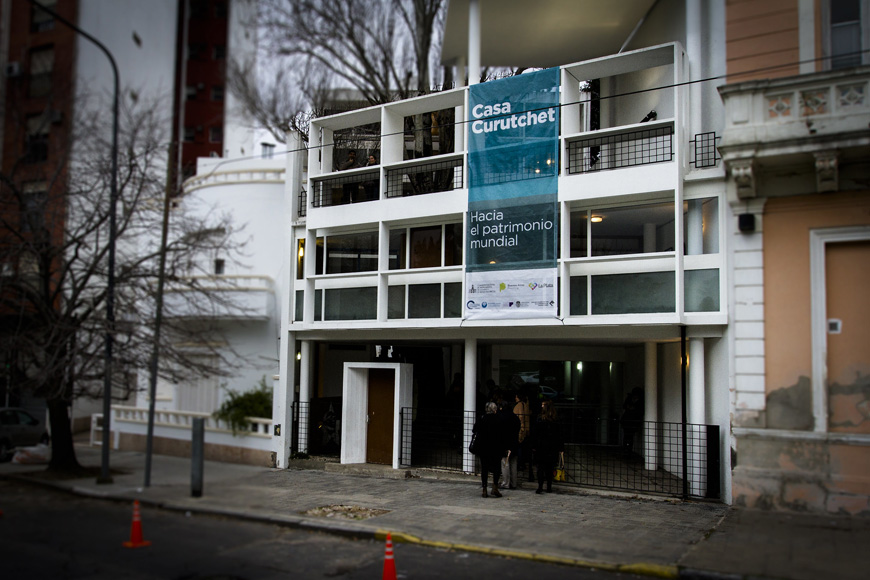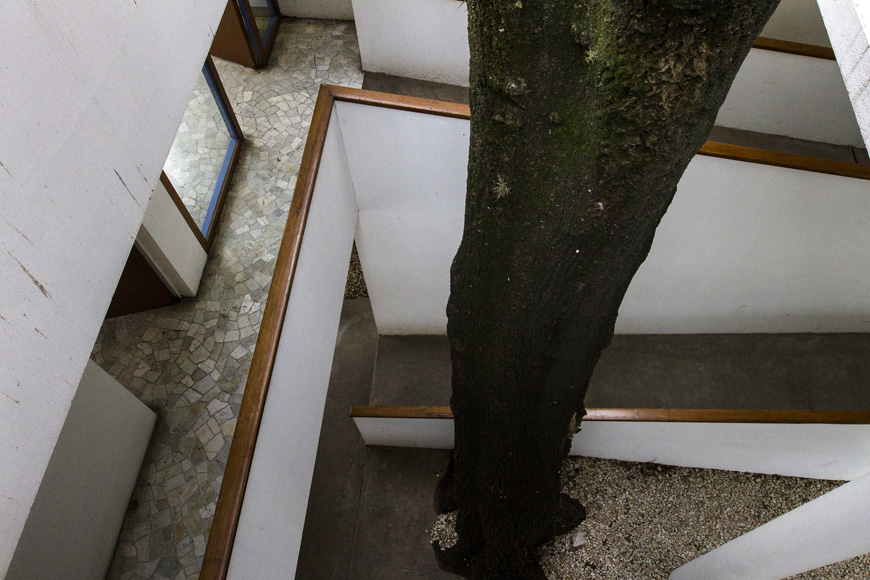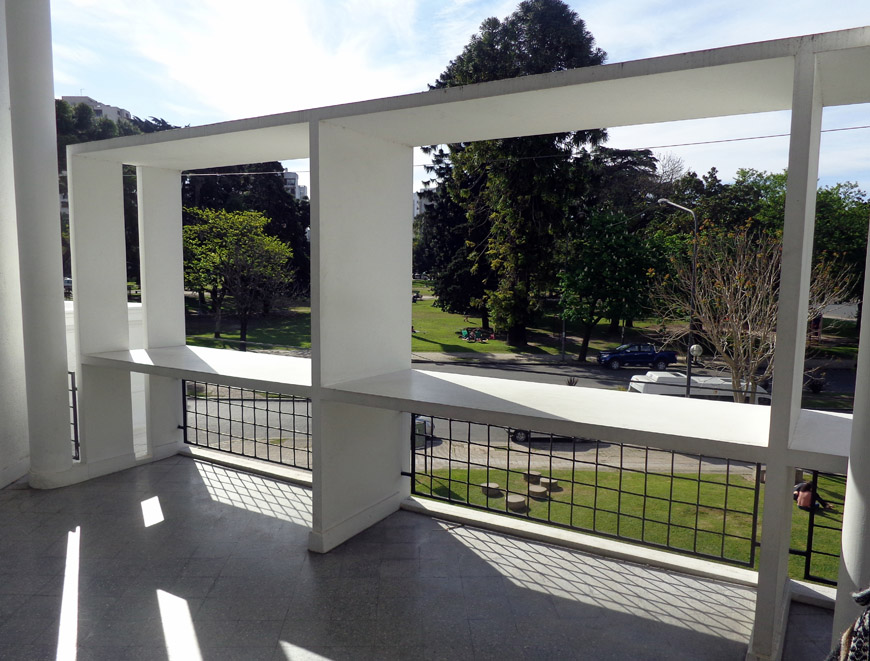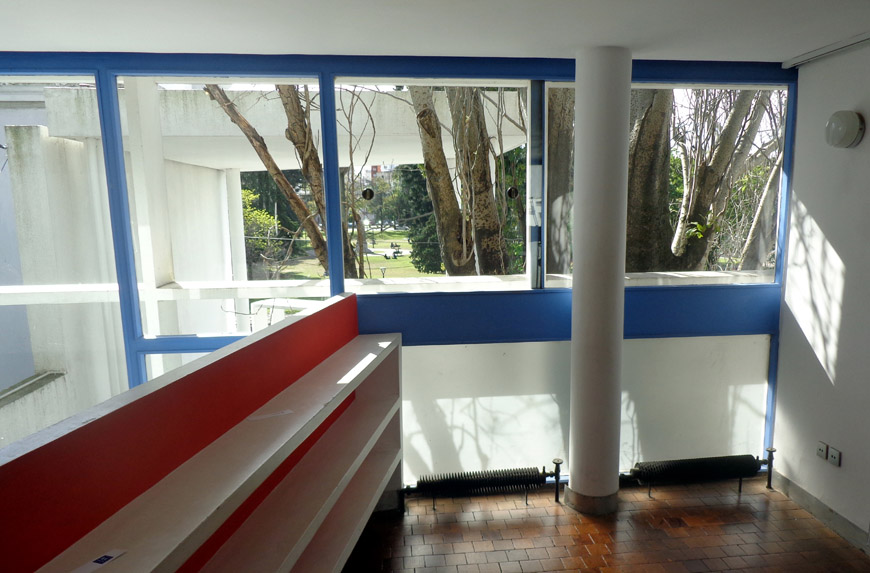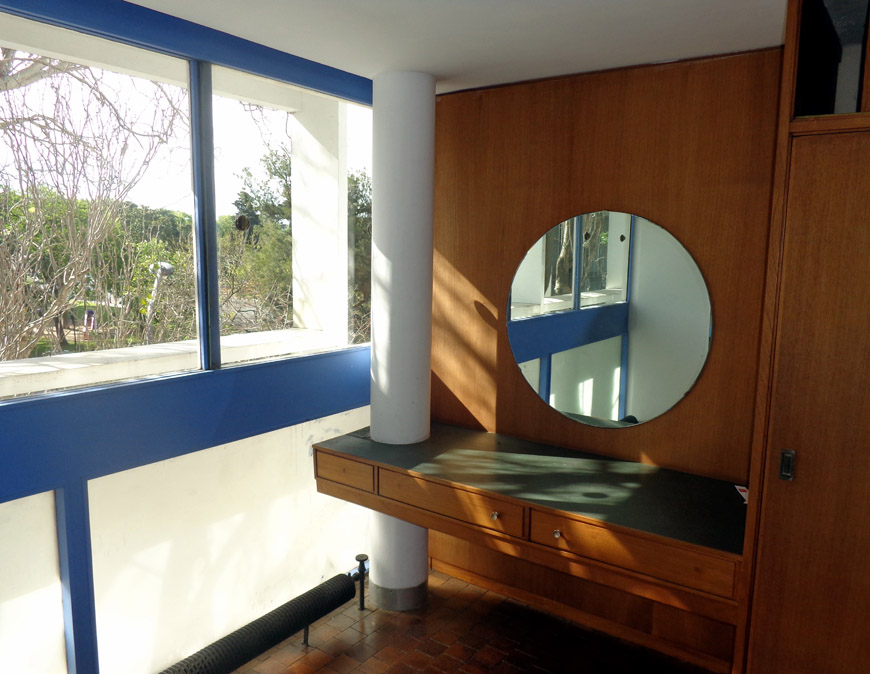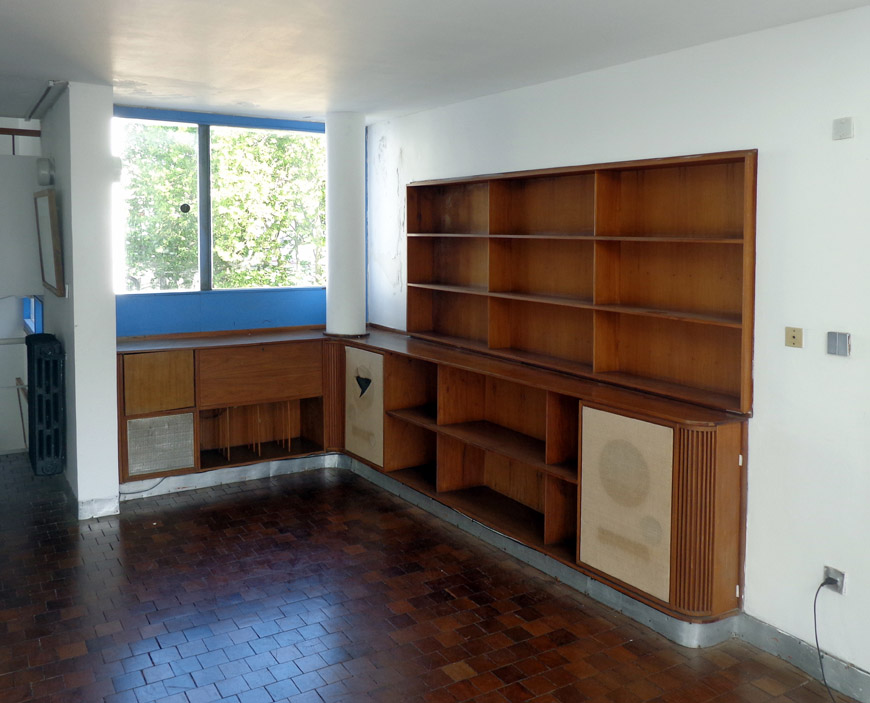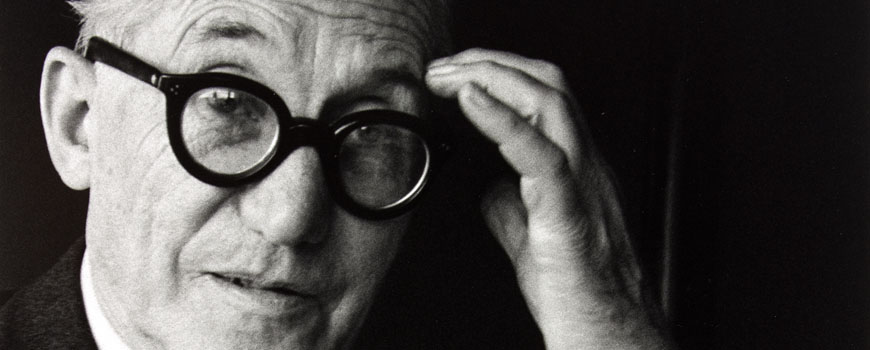Casa Curutchet, Le Corbusier’s only building in South America
Le Corbusier's only building in South America
Photos: see captions
Le Corbusier, Casa Curutchet, La Plata, 1954; photo Roberto Fiadone 2017 via Wikimedia Commons, CC BY-SA 4.0 license.
The history of Casa Curutchet, Le Corbusier’s only building in South America
In 1929, Le Corbusier took a 100-day-long trip and conference tour throughout South America with the help of a young French aviator, Antoine de Saint-Exupéry (yes, it’s the same man who later wrote “The Little Prince”).
During his travel, LC visited several cities including Sao Paulo, Rio de Janeiro, Montevideo, Asuncion, and Buenos Aires; for the latter, he developed a visionary masterplan which, though never realized, had a great impact on South American architects and planners and made LC a well-known figure in Argentina.
That’s possibly the reason why, nineteen years after that trip, an Argentinian surgeon highly regarded for his innovative medical techniques, Pedro Curutchet, dared to contact Le Corbusier, whom he had never met, asking the world-famous architect to design a small house for him and his family in La Plata, a city few miles south of Buenos Aires.
To his great surprise, Le Corbusier accepted the commission.
“If I would answer your question of why I asked Le Corbusier to design my house, I would not be certain to explain it, it happened a long time ago. Maybe because, as Baltazar Gracian wrote, “one has good sudden ideas”. Sometimes, I ask myself the same question, and I suspect that it was because I had an affinity with the great innovator (Le Corbusier), being on my own a revolutionary architect of surgical instruments and technique.” * Pedro Curutchet, 1978.
Le Corbusier’s fee for the project development was fixed at 10% of the building cost, excluding the construction works supervision. The relationship between the client and the architect couldn’t be direct and face-to-face, due to the distance between Paris and La Plata and because Le Corbusier was not recognized as a registered architect in Argentina and could not directly supervise the construction; therefore, Le Corbusier suggested Curutchet four Argentinian architects as possible construction supervisors, among whom the client eventually choose Amancio Williams, a 35-year-old architect from Buenos Aires.
The building site was a small trapezoidal lot, roughly 10 meters / 33 feet wide and 20 meters / 66 feet deep, on a street that cut diagonally one of the many rectangular blocks on which the urban grid of La Plata is based. The lot was narrow and irregular; yet, it faced a small park to the north, a feature Curutchet and Le Corbusier particularly appreciated.
Le Corbusier, Casa Curutchet, La Plata, 1954; photo Roberto Fiadone 2017 via Wikimedia Commons, CC BY-SA 4.0 license.
The spatial program comprised a garage, a small medical office, the maid’s quarters, and the private 3-bedroom residence of Dr. Curutchet and his family.
Le Corbusier quickly and masterfully coped with the tight area available by splitting the house into two interconnected volumes “floating” over the street level and supported by 16 concrete pilotis.
The volume on the street accommodated Curutchet’s clinic, the rear volume contained the 2-story residence, and the ground level housed the entrance, a garage, and the small apartment for the maid. The ground floor and the medical office volumes were connected by a long ramp running alongside a tiny courtyard, while the apartment and the ground floor were connected by a stair. A covered roof terrace built on top of the office volume expanded the residential space outdoors.
Le Corbusier, Casa Curutchet, La Plata, floor plans.
Le Corbusier designed the house also as a demonstration of the “Five Points of Architecture” he had conceived almost thirty years before:
1) The building is “raised” over thin circular columns, known as pilotis, thus leaving the ground floor substantially free and permeable to light and air.
2) The presence of a roof terrace.
3) A structural frame replaces the load-bearing walls, thus allowing a free plan with different spatial configurations on each level.
4) Horizontal ribbon windows pour plenty of daylight into the interior space.
5) An open and transparent facade free from any structural function.
Furthermore, the Swiss-French architect set the house dimensions on his Modulor anthropometric proportion system; this caused some bureaucratic problems because the system scale did not fully comply with local health and safety regulations, yet the architects were able to eventually overcome them.
Le Corbusier, Casa Curutchet, La Plata.The north facade on Avenida 53.
Photo by Soledad Amarilla/Ministerio de Cultura de la Nación via Flickr, CC BY-SA 2.0 license.
Building the house was a rather long and troubled process though due to the distance between the client and architect and the financial problems caused by the strong inflation plaguing Argentina at the time.
Yet, after revising many elements to reduce the construction cost, it was possible to complete the building in 1954.
Curutchet lived in the house with his family for ten years, before relocating to the city of Loberia in the mid-Sixties, after which the building was used only sporadically and began to deteriorate.
Yet, since its completion, the building has been an “architectural pilgrimage” destination for architects from all over the world, especially from Argentina.
Now famous as “Le Corbusier’s only building in South America”, the house was declared a National Monument in 1987.
In 1991, Casa Curutchet became the seat of the Colegio de Arquitectos de La Plata and, fully restored, was finally opened to the public.
In 2016, Casa Curutchet was declared a UNESCO World Heritage Site
* Alejandro Lapunzina, Le Corbusier’s Maison Curutchet, Princeton Architectural Press, New York, 1997; p. 37
Casa Curutchet
Boulevard 53 Nº 320
La Plata, Argentina
https://www.capbacs.com/
Picture gallery
The ramp connects the entrance with the medical office of Curutchet.
Photos by Soledad Amarilla/Ministerio de Cultura de la Nación via Flickr, CC BY-SA 2.0 license.
Le Corbusier, Casa Curutchet, a view of the roof terrace; photo Roberto Fiadone 2017 via Wikimedia Commons, CC BY-SA 4.0 license.
Le Corbusier, Casa Curutchet, interior views of the house; photos Roberto Fiadone 2017 via Wikimedia Commons, CC BY-SA 4.0 license.
copyright Inexhibit 2025 - ISSN: 2283-5474

